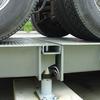The group also
- Represents the interests of the US in the national, regional, and international metrology communities, through participation and/or leadership in consultative committees, working groups, and standards organizations to guarantee US competitiveness and the equivalence of standards worldwide.
- Carries out research and development and provides technical support in legal metrology, measurement science, instrumentation design, development, and testing to develop new physical measurement services, new realization of the units, new transfer standards, new methods and data, and custom tests to improve NIST capabilities in providing traceability and leadership to meet the needs and demands of U.S. industry, government, and the scientific community.
News and Updates
Projects and Programs
Publications
Tools and Instruments
Awards
Contacts
Group Leader
-
(301) 975-4468













